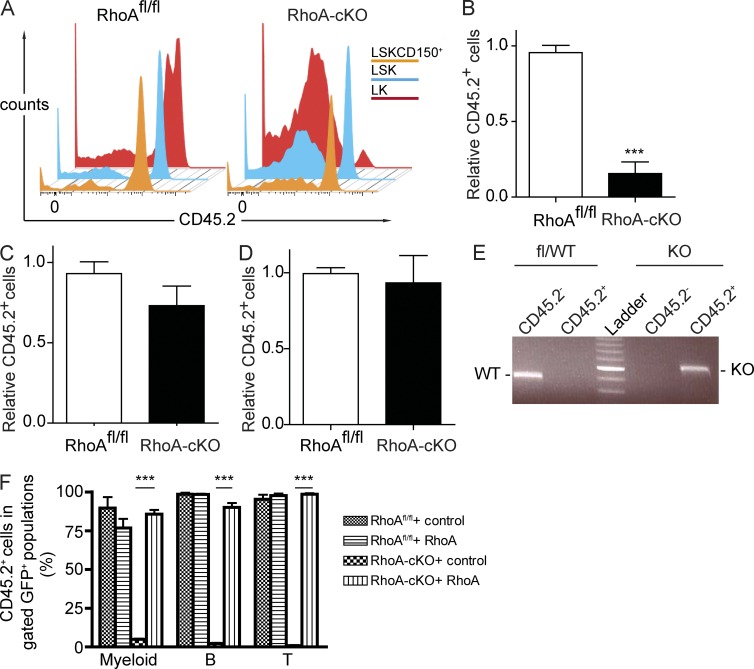Figure 4.
RhoA deficiency depletes HPCs but not HSCs in competitive setting. (A) CD45.2+ donor BM cells of the RhoAfl/flMx-cre+ or Mx-cre− genotype were cotransplanted into lethally irradiated CD45.1+ recipients together with equal number of CD45.1+ WT competitor cells. Three poly I:C injections were administrated 8 wk after the transplantation, and BM cells from the primary recipients were transplanted into secondary recipients 4 mo after the poly I:C injections. Data were analyzed 5 mo after secondary transplantation. Representative flow cytometry plots of CD45.2 expression within the LK, LSK, and LSKCD150+ population in the competitive transplant recipients are shown. (B–D) Relative chimerism of donor-derived LK (B), LSK (C), and LSKCD150+ (D) in BM of recipients. (E) DNA from sorted CD45.2+ LSK cells was used as PCR template to determine the deletion efficiency of RhoA. Data were analyzed 5 mo after secondary transplantation. Brightest band of ladder: 600 bp. (F) LSK cells from poly I:C–injected competitive transplantation recipients were transduced with RhoA-expressing or control virus and transplanted into secondary recipients. PB samples were examined 16 wk after transplantation. Percentage of donor-derived (CD45.2+) cells in gated GFP+ mature lineages of PB was determined by flow cytometry. Numbers of mice analyzed: six (A–D) and four (F) mice per group. The results from a representative experiment of three (A–D) or two (F) independent experiments are shown. Error bars indicate SEM. ***, P < 0.001.

